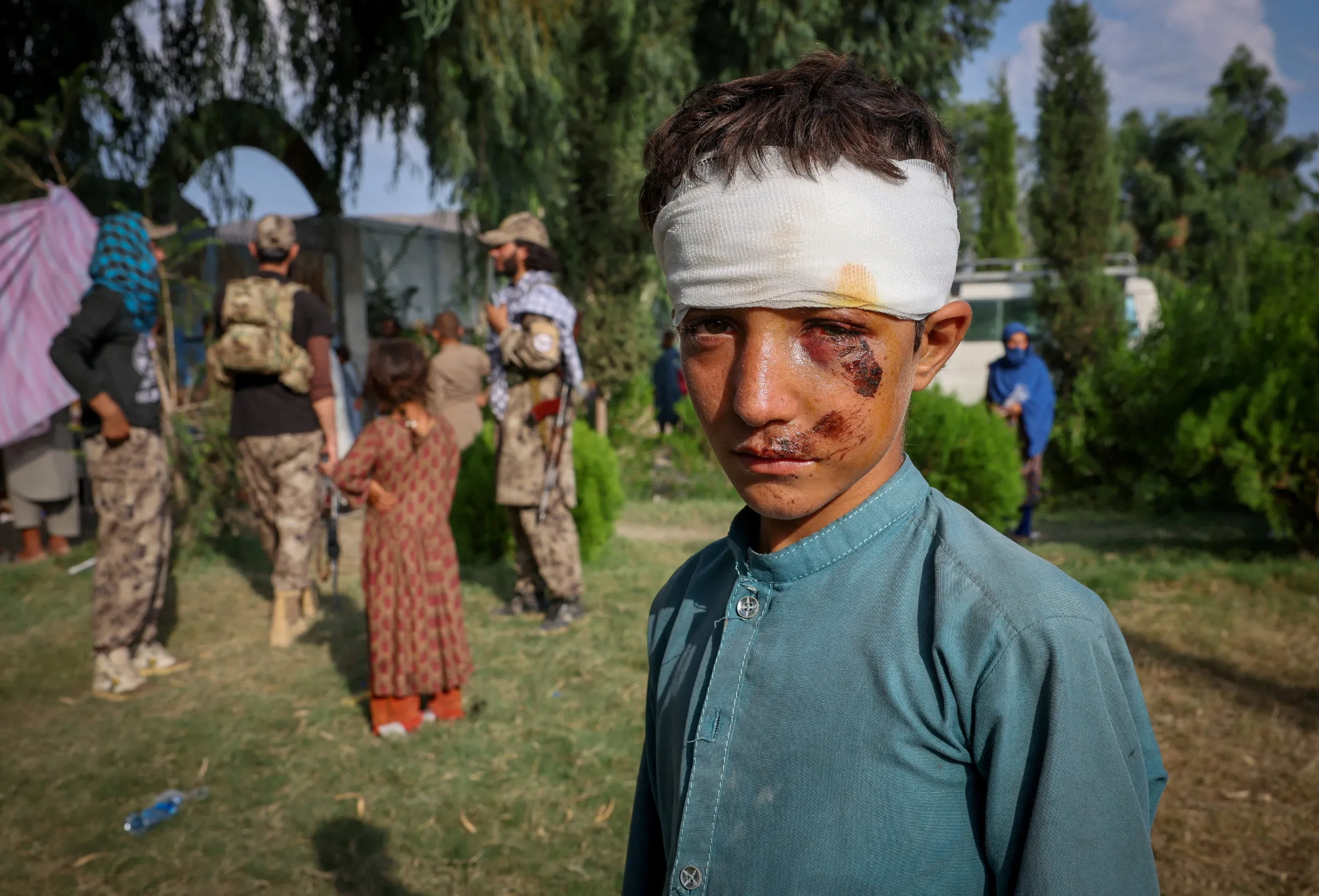US aid cuts cost lives in Afghan quake

A boy waits after getting treatment at a mobile clinic setup inside a school, in Nurgal district, Kunar province, Afghanistan, September 3, 2025. REUTERS/Sayed Hassib
What’s the context?
Lack of funding hampers response to one of Afghanistan's worst earthquakes in recent years.
- Clinics near quake zone shut
- Funding cuts slow aid operation
- Taliban asks world for help
LONDON - U.S.-led aid cuts have increased the death toll in a devastating Afghan earthquake with hundreds dying from their injuries because nearby clinics have closed, aid workers say.
The dramatic fall in global aid has diminished stockpiles of emergency supplies, shrunk the pool of aid workers on hand and grounded a helicopter that could have helped remote communities, according to humanitarian agencies.
More than 2,200 people were killed and thousands injured when a powerful quake struck eastern Afghanistan on August 31, followed by multiple aftershocks.
Villages were flattened, leaving tens of thousands homeless.
The toll is expected to rise as rescuers comb mountainous terrain where many people are sleeping in the open.
"The funding shortfall has had a very obvious impact," Rahmat Shirzad, a spokesperson for aid agency Islamic Relief, told Context from Kabul.
"There's no doubt that hundreds have lost their lives because health facilities have shut."

Workers load supplies onto a truck for earthquake victims in Nurgal district, Kunar province in Afghanistan September 6, 2025. REUTERS/Sayed Hassib
Workers load supplies onto a truck for earthquake victims in Nurgal district, Kunar province in Afghanistan September 6, 2025. REUTERS/Sayed Hassib
Forty-four clinics serving over 363,000 people in Nangarhar and Kunar, the worst-affected provinces, suspended operations or closed this year due to U.S. aid cuts, according to World Health Organization figures.
"If the clinics had been there, we could have saved many more lives," said Srikanta Misra, Afghanistan country director for ActionAid. "Closures contributed to the high death toll."
Humanitarian aid for Afghanistan has fallen to $769 million this year from $1.73 billion in 2024.
About 43% of last year's help came from the United States.
But President Donald Trump has slashed foreign funding and dismantled the U.S. aid agency under his "America First" agenda; many other Western donors have also pared back help.
The shortfall has forced agencies in Afghanistan to shed staff and axe programmes.
Previous disasters better funded
Shirzad said Islamic Relief had set up an emergency clinic in Chawkay district, but could save many more lives if it had the money to open additional centres.
He estimated the overall quake response was nearly half the size of the aid operation that followed a 2022 earthquake.
"We had many more organisations providing health services," he added. "We did not have so many people losing their lives."
ActionAid's Misra said funding was also significantly lower than it was after a 2023 earthquake in western Afghanistan
"The response is highly inadequate," he added.
Afghanistan is already grappling with economic isolation, drought, floods, crippling poverty and hunger, and the return of some 2 million Afghans pushed out of neighbouring countries.
International donors halted most funding for Afghanistan after the Taliban seized power in 2021, but still provide humanitarian aid.
The Taliban administration, which is using helicopters to deliver emergency supplies and evacuate injured survivors, has asked for international assistance. But donors are loathe to channel funds via the authorities due to their treatment of women and ban on female aid workers.
On Tuesday, the United Nations launched an emergency appeal for $139.6 million to help half a million people affected by the quake.
U.N. officials say lives are at stake with punishing winter temperatures on their way. But progress is slow - landslides caused by the quake and previous flooding have blocked roads, with many areas only reachable on foot.
Appeals
Aid workers said falling temperatures combined with the lack of shelter, food and clean water will worsen the health risks.
Disease could also spread due to an increase in open defecation and rotting animal carcasses.
Misra said regional stockpiles of emergency supplies - tents, blankets, medicines - were low because of the U.S. cuts.
The funding crunch has also impacted agencies' ability to hire experts, including search and rescue specialists, Misra said, and weakened life-saving coordination in the field.
Germany, Britain, the European Union, UAE, India and Japan are among those sending emergency aid.
But the United States has not offered help, despite doing so after past earthquakes.
Misra said aid organisations were launching public appeals and urging philanthropic organisations to help plug the gap.
"It's the first time I've seen aid organisations make so many public appeals on this scale," he added.
Grassroots efforts have also sprung up across Afghanistan and among diaspora communities overseas.
In Khost province, south of the quake zone, youth volunteer Ahmad Wali said young men were collecting food, clothes and cash for survivors; shops and pharmacies had donated medicine.
Volunteers are also raising funds outside mosques and in bazaars throughout the country.
"No one is coming from outside to get us out of this calamity," said Haji Bashir, a community elder organising a collection in Jalalabad, a city not far from the epicentre.
"The world has abandoned us. If we don't help each other, no one will."
(Reporting by Emma Batha and Manija Mirzaie; Writing by Emma Batha; Editing by Lyndsay Griffiths)
Context is powered by the Thomson Reuters Foundation Newsroom.
Our Standards: Thomson Reuters Trust Principles


















